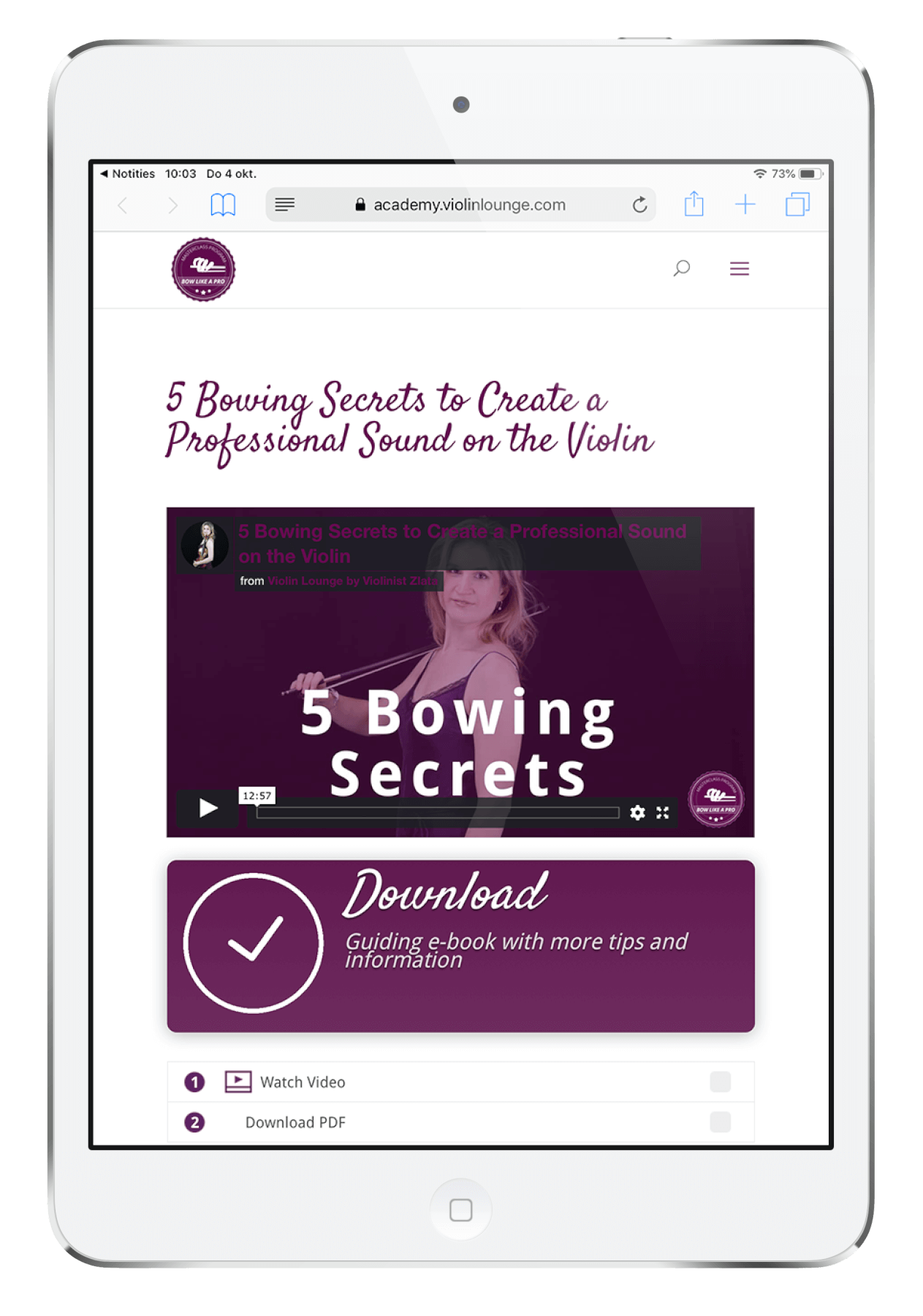How to Make Your Bow Hold More Flexible and Bow Like a Pro?
Violin Lounge TV Q&A about getting a more flexible bow hold:
“Hi Zlata I was wondering if you have any advice for wrist and finger flexibility when playing with regards to bow hold as my fingers and wrist are relatively static when bowing. Thank you kind regards Rajeeve New Zealand. P.S also any exercises you recommend. Thank you”
In this blog, I will answer a question from Rajeeve, who asked if I could give any “advice for wrist and finger flexibility when playing with regards to bow hold as my fingers and wrist are relatively static when bowing.“
A bow hold is NOT rigid, it’s flexible!
This is indeed what a lot of violist and violins do wrong. What I see a lot in amateur orchestras, is that their bow hold is the same and that it is quite a tensed and rigid hold through bowing.
So even people who play for 25 or 30 years are still making this mistake that they think their bow hold is something rigid. However, bow hold is something that is changing continuously, depending on the place you are on the bow, the kind of bow you use, the speed you play with etc.
So therefore just if you didn’t know: A bow hold is NOT rigid, it’s flexible! You can better name it bow movement instead of bow hold (it is in motion all the time)
So… how can you get a flexible bow hold and start bowing like pro?
When you are doing down bow, your fingers stretch. When you are doing up bow, your fingers bend (so also your pinky and your thumb, which are most difficult). Additionally, when you do up bow, your wrist will go up a little bit as well.
So why are you doing this? Well, if you are moving your hand to play the violin up bow and you don’t move your wrist up as well, your arm will make a round movement. However, playing the violin should be a straight movement. Therefore, lifting up your wrist a little bit will compensate the curve, making a round movement into a straight on (also look at the video for a demonstration).
The same occurs when you are throwing a ball away. If you leave your hand in a stiff position, you will throw the ball away in a round movement. However, if you want to throw the ball straight ahead, you’ll adjust the position of your hand before you throw.
How to practice this? Try out these exercises!
The exercise I would recommend you to do, is that you bow all the way from the frog to the tip of the bow, so really use all the hairs (even if it doesn’t sound very well, this is a really good exercise for the movement).
Make sure that your fingers are really round and keep them relaxed, and then move really slowly all the way from the frog to the end of your bow. This is not an exercise for tone production, so don’t worry about the sound. Instead, observe what is happening to your hands (it goes from closed to open and straight- also look at the video for a demonstration).
When you have done that, very slowly move your hand up again (up bow), and look what your fingers do. Don’t force the movement and keep in mind that your hands are moving along with your bow; the bow is not moving along with your hands. The movement will go natural and relaxed.
I hope I have answered your question and that these exercises will help you improve your hand and finger flexibility when moving your bow.
Is this video useful for you? Please share your thoughts in the comments below!
Love,
Zlata
PS: Do you want to see YOUR question answered in a Violin Lounge TV episode? Post a comment below!’
Improve your violin bowing technique
Enjoy my FREE mini Masterclass 5 Bowing Secrets to Create a Professional Sound on the Violin


very well explained
Thanks!